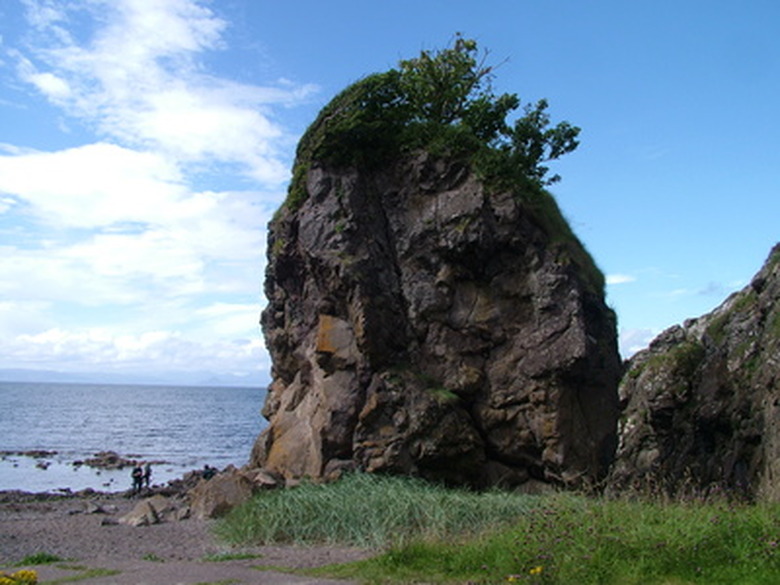How Does Freeze-Thaw Weathering Work?
Rocks may seem incredibly hard, but, like nearly everything else in nature, eventually they wear away. Scientists call this process – where the forces of nature consume rocks and them back into sediment – weathering. There are many different materials that erode rocks over time, including water. Given its ubiquity, water is one of the most common agents of rock weathering, especially when it freezes and melts over time in a process called freeze-thaw weathering. Still, there are many other weathering agents that eat away at rock.
Mechanical (or Physical) Weathering
Mechanical (or Physical) Weathering
There are three kinds of rock weathering, which are called mechanical, chemical and biological weathering. The freeze-thaw weathering cycle falls under the category of mechanical weathering (also called physical weathering). Mechanical weathering is a process in which a weathering agent wears away at a rock without altering its mineral makeup or its molecular structure (as happens with rust or oxidation).
A rock weathered through mechanical weathering is chemically identical before and after the process. Mechanical weathering changes only the size and shape of a rock.
Freeze-Thaw Weathering
Freeze-Thaw Weathering
As the Water Encyclopedia reports, water expands 9% when it freezes. This makes the freeze-thaw cycle a powerful weathering agent. If, for example, water seeps into a crack in a rock, freezes overnight and then melts again in the morning, the expansion of the ice during the night will make the crack bigger.
In the morning, that water will melt, but because the crack is bigger, it can now take on more water. That night, this even greater volume of water will expand, making the crack even bigger. Over time, this freeze-thaw process pushes pieces of rocks apart, eventually causing pieces of the rock to break off into smaller fragments.
The freeze-thaw cycle is what gives water the ability to break rocks apart, but the process is also sometimes called frost wedging. Either term is acceptable.
The Power of Water
The Power of Water
The freeze-thaw cycle is not the only way that water can eat away at rock. Rivers and streams can erode rock because their waters carry debris and other sediment that constantly flows over a rock's surface, wearing it down. Both erosion and weathering are considered destructive forces in geology.
One of the most famous examples of rock weathering in the world, Arizona's Grand Canyon, is a result of this form of mechanical water weathering. However, water alone did not sculpt the canyon, as wind, as well as other chemical processes, contributed to the contours and colors too.
Initially created by constructive forces, the Grand Canyon and the landscape around it is constantly changing due to the destructive forces of weathering and erosion. Slowly breaking landforms down over thousands of years, the processes of weathering and erosion change the appearance of landforms.
Other Weathering Processes
Other Weathering Processes
The Grand Canyon is the result of multiple forms of weathering creating its current form. Its colors are due to chemical weathering, in which the actual mineral composition of the rock breaks down or changes. Oxygen, acids and other compounds in the environment combine with minerals found in rocks to create iron oxides, salts and clays through the process of chemical weathering.
Another form of weathering, biological weathering, occurs when living things alter rocks. Tree and plant roots, much like the freeze-thaw cycle, exploit the cracks in rocks, and as they grow, push rocks apart. Animals break rocks apart as they burrow, moving fragments to the surface as they dig tunnels.
Often, as in the case of weathering caused by burrowing animals, the three forms of weathering work together. Biological weathering caused by burrowing animals brings rocks to the earth's surface, where they are more susceptible to both chemical and mechanical weathering.
Cite This Article
MLA
Mann, Terry. "How Does Freeze-Thaw Weathering Work?" sciencing.com, https://www.sciencing.com/freezethaw-weathering-work-6365502/. 20 October 2021.
APA
Mann, Terry. (2021, October 20). How Does Freeze-Thaw Weathering Work?. sciencing.com. Retrieved from https://www.sciencing.com/freezethaw-weathering-work-6365502/
Chicago
Mann, Terry. How Does Freeze-Thaw Weathering Work? last modified August 30, 2022. https://www.sciencing.com/freezethaw-weathering-work-6365502/
